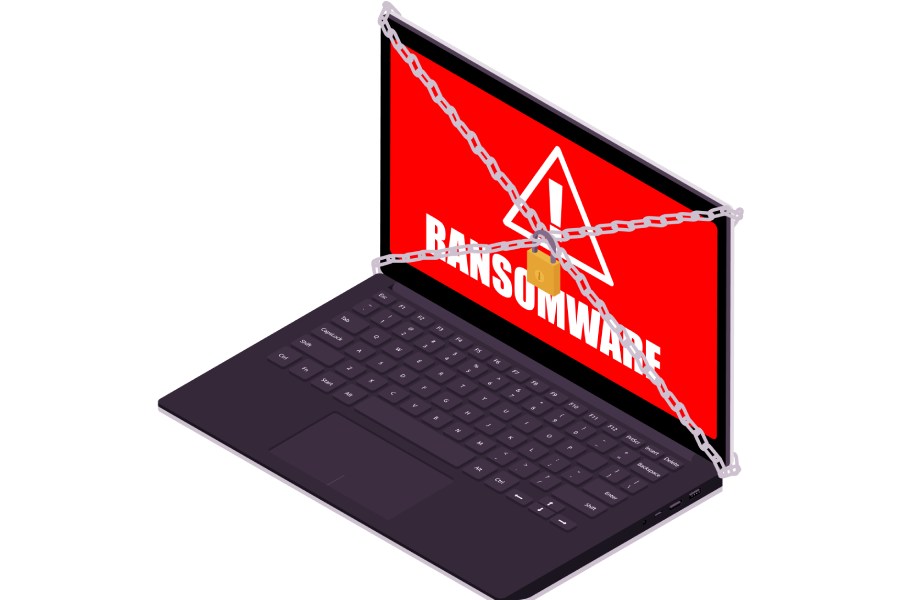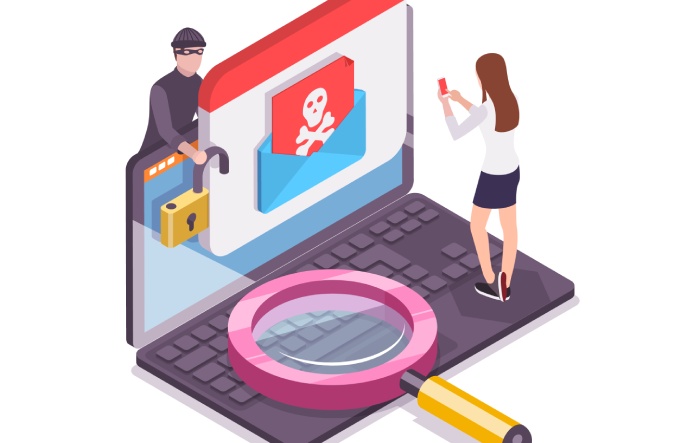Ransomware is a form of malware that takes control of the victim’s system and threatens to block access or delete files if the victim ignores it. Hackers and adversaries are continually upgrading ransomware to elude even the sophisticated anti-malware software.
Hence, every individual needs to learn the basics behind ransomware attacks. Be knowledgeable enough so that you will no longer be of those who keep asking ‘How do I get ransomware on my computer,’ ‘How does ransomware get installed in a system,’ etc.
How To Identify Ransomware?
There are various indications that can show that your system is infected. Let’s look at ways to identify ransomware.
Ransom Note
Ransomware can get into your systems through phishing emails and email attachments without your knowledge. Once ransomware is installed, it starts doing its malicious job in the background by encrypting and renaming your files. Most of the time, people come to know about a ransomware attack only when a ransom note appears on their screen. In these ransom notes, the ransomware hackers post their demands and how they want you to pay the ransom, or face deletion of files. Recently, the Jigsaw ransomware resurfaced demanding victims to pay the ransom in the form of bitcoins. Victims either make the payment or face the risk of deletion of their valuable data in one-hour intervals unless ransom gets paid.
File Encryption
Another simple way to know if your system is infected with ransomware is to check your files for any encryption. If you find that they are encrypted, it is mostly because of a ransomware attack. Ransomware can encrypt all kinds of data, including videos, audios, documents, and images.
File Renaming
Another method to identify a ransomware attack is to check your file folders. If you find that the files have been renamed, then it is usually associated with a ransomware attack.
Changing File Extensions
One of the most common ways of a ransomware infection is altering the file extensions. If you notice that your files are getting renamed with unknown extensions, then it is evidence that your system is affected with ransomware.
So How Does Ransomware Get Into your Computer?
Ransomware creators use innovative ways to get their ransomware into your system. Mainly, people having systems with less cybersecurity protection and are unaware of ransomware are affected. Let’s look at how it happens.
Through Phishing Emails
Ransomware creators made use of game and software downloads earlier. However, spam emails are the latest tools used by cybercriminals to install ransomware on your system. Cybercriminals create sophisticated emails that look like legitimate ones with all the text, colors, and font resembling the original emails. It ensures that it doesn’t evoke any doubt on the minds of users and help them to achieve their goal quickly.
Take a look at how a phishing email installs ransomware on your system:
- The victim receives a phishing email that resembles an email from a trusted source.
- The email mostly contains malicious URLs and file attachments.
- The email demands the victim to click the URL or download the attachment.
- Unsuspecting users not aware of the potential problem click the URL and download the attachment.
- The ransomware gets installed on to the system and starts encrypting the files.
- Once it completes encrypting, renaming and taking complete control of the files, a ransom note appears on the screen demanding the ransom amount.
- Victims who don’t comply face the risk of losing their valuable data.
Through Exploit Kits
Another way of inflicting ransomware attacks on victims is through exploit kits. Unlike spam emails, a victim does not need to click a malicious URL or download an email attachment to install ransomware. Instead, hackers take control of a website and upload malicious code on to its pages. People visiting the website get affected by ransomware through browser vulnerabilities exploits.
Know how exploit kits are used to install ransomware on your system:
- Through malvertising, victims are taken to a malicious website under the control of ransomware creators.
- Once the victim enters these websites, the malicious code that already exists on these pages starts scanning the victim’s system for vulnerabilities and ways to install the ransomware in the system.
- If they find easy vulnerabilities, it automatically installs the ransomware in the system.
- Now, it is the usual job, including encrypting, renaming, and ransom notes.
What To Do If You Get Ransomware?
Unfortunately, you’ve become a victim to a ransomware attack. So, what to do when you get ransomware?
Isolate The Affected System
The first thing we would do when we notice a ransomware attack is to isolate the affected system. Disconnecting our system from the network and other shared computers will stop the ransomware from infecting other systems.
Identify The Infection
Isolation done. ‘What ransomware do I have?’ is the next question on our mind. It is easy to determine the kind of ransomware from the ransom note or using anti-malware tools.
Reporting Ransomware
Once you identify a ransomware attack, you must report it to the authorities concerned immediately.
Determine Options At Hand
The next step is to determine the options you have. Search on the internet about how to counter the ransomware.
Restore Backup Data
The best and immediate option to counter a ransomware attack is to restore your system using the latest backup options and use anti-malware tools to eliminate the ransomware from your system.
Conclusion
Ransomware attacks are a major concern among businesses across the globe. As a recent study revealed in CyberCrime Magazine, global damages from ransomware could go up to $20 billion in 2021. Hence, everyone must at least learn about the basics of ransomware, such as how to identify ransomware and what to do if you get ransomware installed on your system.



